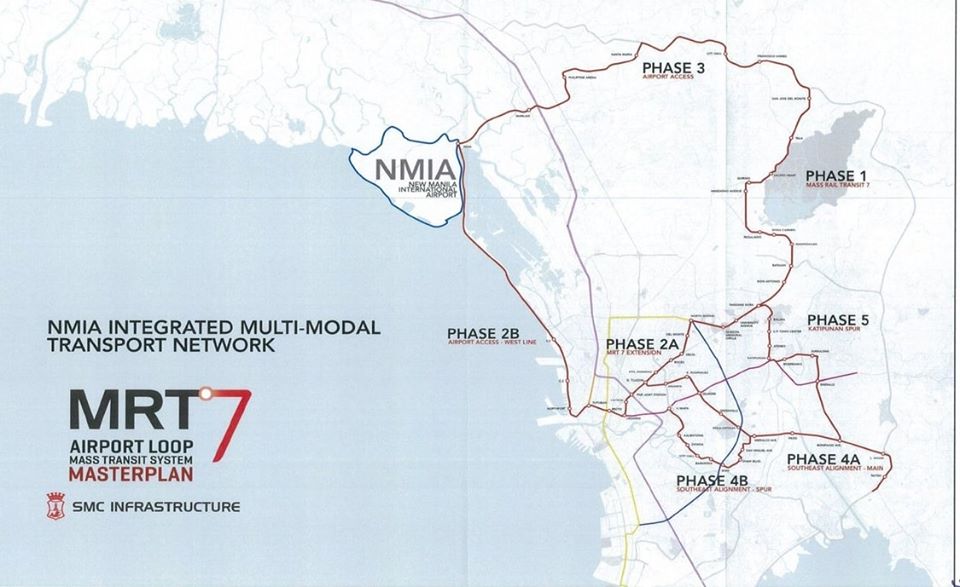Last Updated on March 21, 2021 by OJ Maño
San Miguel Corporation has unveiled major rail and road network projects. It will incorporate into its P740-B airport project in Bulacan to provide seamless travel around the country and help decongest EDSA.
To decongest EDSA, provide seamless travel: SMC to build new road, rail networks leading to Bulacan airport
“These projects make up the massive infrastructure network that will not only make the airport easily accessible from Metro Manila and various points of Luzon but will also further unlock the economic potential of so many of our provinces. The airport, travel, and trade in Luzon, Visayas, Mindanao, and outside the country will be easier and more efficient. This is part of our commitment to invest more in our country and help our government and our people build back better,” SMC president and chief operating officer Ramon S. Ang said.

SMC also thanked the local government units of Bulacan for their full support and aligned with the company’s future infrastructure projects to complement the airport transport system. “We’re happy that the local government leaders also share our vision for the development of Bulacan through this airport. With the LGUs agreeing to align their own road network projects to those that will be built by San Miguel, we can significantly reduce traffic congestion and improve the transport system in the province,” Ang said.
SMC to build new road and rail networks

SMC’s airport development plan includes an 8-kilometer airport toll road that will connect the airport to the North Luzon Expressway and link it to the recently-completed 18-kilometer Skyway Stage 3 going to the South Luzon Expressway (SLEX).
According to Ang, Skyway Stage 3 is also part of SMC’s efforts to help the country. Seen to help boost the economy and improve productivity by enabling trade, tourism, and transportation, Skyway is a project that many thought could never be done. Saddled with numerous contentious right-of-way issues necessitated major changes to its design and alignment, resulting in higher costs and a longer timeline.
SMC fully funded the project with no government subsidies or guarantees. It also paid in full for all right-of-way properties and built three new bridges in San Juan, Mandaluyong, and Manila. It did these to fast-track construction of the 18-kilometer elevated expressway traversing Metro Manila’s densest, busiest cities.
Read SMC extends free toll to medical frontliners on Skyway Stage 3
In a recent meeting with LGUs in Bulacan, SMC also presented several proposed road expressway projects that include the NMIA Airport Expressway, Integrated Airport Toll Expressway Network-Northern Access Link, Integrated Airport Toll Expressway Network-Southern Access Link, Integrated Airport Toll Expressway Network- Central Access Link, East Metro Manila Expressway, Northeast Airport Expressway, Calamba-San Pedro Expressway, Bulacan-Tarlac Expressway (BTEX), Bataan-Bulacan Expressway (BBEX), Skyway Stage 3-R10 NMIA Expressway, MRT 7 Road, and NMIA Expressway MRT 7 (Road Spur Access).
Read Trains of the New Flagship Malolos-Clark Railway Will Roll by 2022
Proposed railway transport modes are the MRT7 Katipunan Spur, MRT7 Airport Expressway-North Line, MRT7 Airport Expressway-West Line, MRT7 Extension Project, and MRT7 Airport Expressway Southeast Line, all of which have been granted “Original Proponent Status.”
“These proposed rail and road networks that will form part of a seamless transport system will allow the province to accommodate the millions of passengers who will enter the country through the Bulacan airport every year. It will also allow the smooth delivery of goods and services, particularly coming from the Bulacan Airport City Economic Zone that is expected to attract business locators and provide employment to residents,” he said.